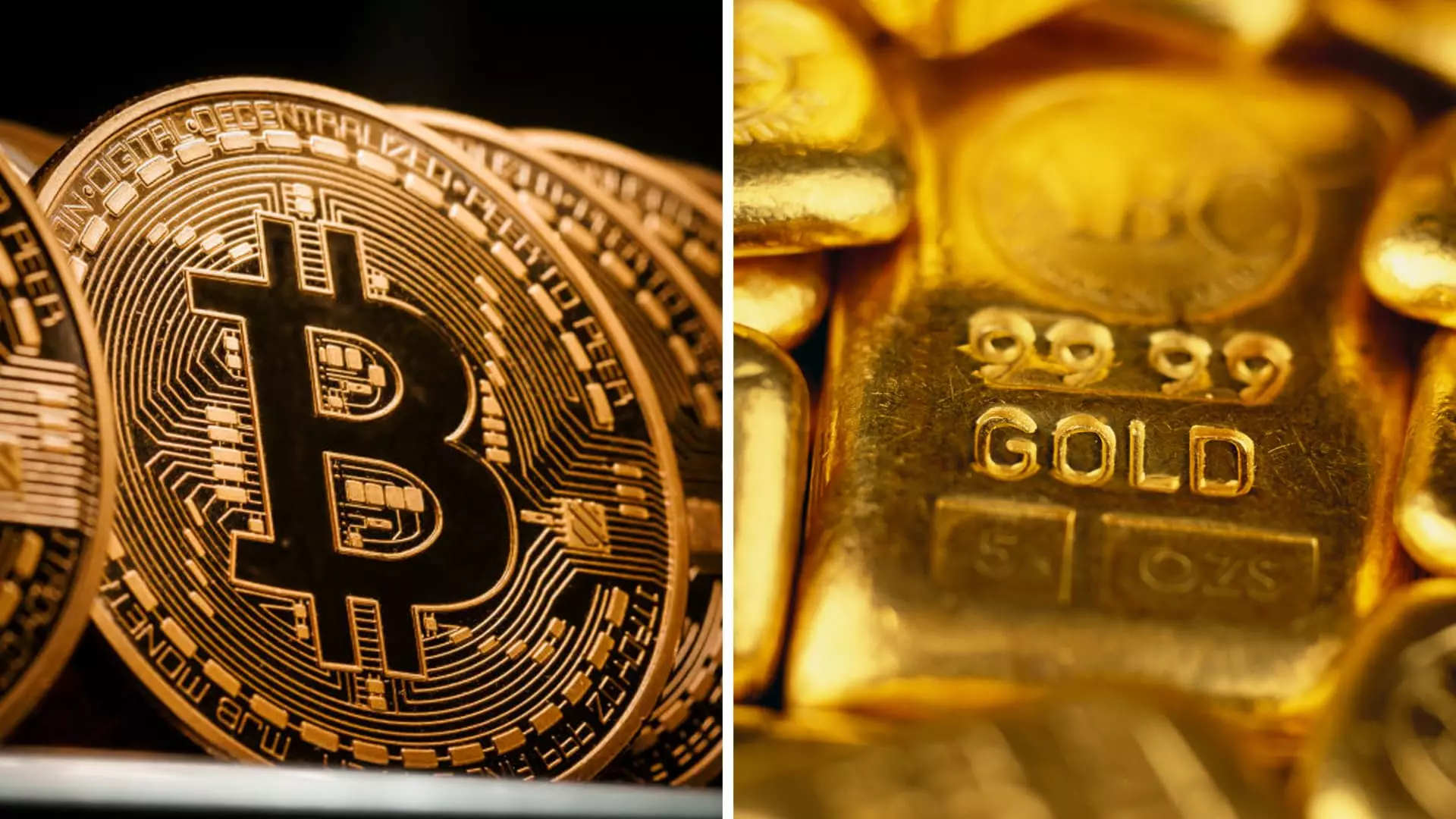In recent market developments, the contrasting trajectories of Bitcoin and gold have captured the attention of investors worldwide. While Bitcoin has been enjoying a meteoric rise, its volatility raises concerns about the long-term stability of cryptocurrency investments. In stark contrast, the performance of gold—celebrated for its historical role as a safe haven—has been steadily robust. George Milling-Stanley, the chief gold strategist at State Street Global Advisors, has voiced significant reservations about the current crypto craze, suggesting that the allure of Bitcoin might be masking its inherent risks.
While Bitcoin enthusiasts revel in the currency’s price surges, Milling-Stanley emphasizes the distinction between speculative profit and true asset stability. He argues that Bitcoin primarily offers a “return play,” attracting investors in search of quick gains. This creates a precarious scenario in which investors may blindly follow trends without fully comprehending the underlying risks. Unlike gold, which has consistently appreciated over time—having quintupled in value since the introduction of the SPDR Gold Shares ETF two decades ago—Bitcoin lacks a comparable legacy of stability.
Gold’s Enduring Value versus Bitcoin’s Speculative Nature
Current market data illustrates gold’s resilience; it recently experienced its best weekly performance since March 2023, pushing prices close to historical highs. In contrast, Bitcoin’s value is subject to extreme fluctuations, resulting in an unpredictable investment climate. Investors lured by Bitcoin’s rapid ascension may find themselves caught in a speculative trap. Milling-Stanley warns that the marketing tactics employed by cryptocurrency advocates can mislead potential investors, drawing comparisons to gold in a bid to gain legitimacy. This phraseology, he argues, seeks to replace the established credibility of gold with a more volatile asset.
Milling-Stanley articulates a broader narrative about the psychological aspects of investing. The prevailing sentiment of “FOMO” (Fear of Missing Out) in the crypto market can lead to impulsive decisions. This dynamic contrasts sharply with gold’s status as a reliable hedge against inflation and economic instability. The strategist suggests that investors should approach Bitcoin with a degree of skepticism and reconsider the fundamental reasons they seek investments—whether for security or speculative gains.
The Future: Uncertainties and Potential
Looking ahead, Milling-Stanley remains cautious about predicting the future trajectory of either asset. He acknowledges the complicated interplay of various market factors that could influence both Bitcoin and gold over the next two decades. The underlying message is clear: while both investments may have their merits, it is vital for investors to engage in thorough research and maintain a critical perspective, particularly in an economic landscape characterized by uncertainty.
The discourse surrounding Bitcoin and gold underscores the necessity for investors to distinguish between fleeting trends and enduring value. As the financial world continues to evolve, understanding these complexities will be fundamental for informed investment decisions.

